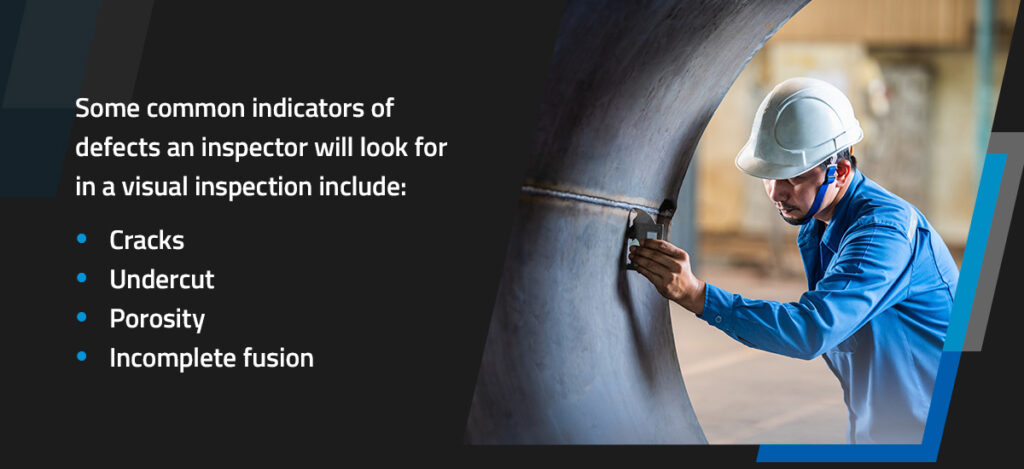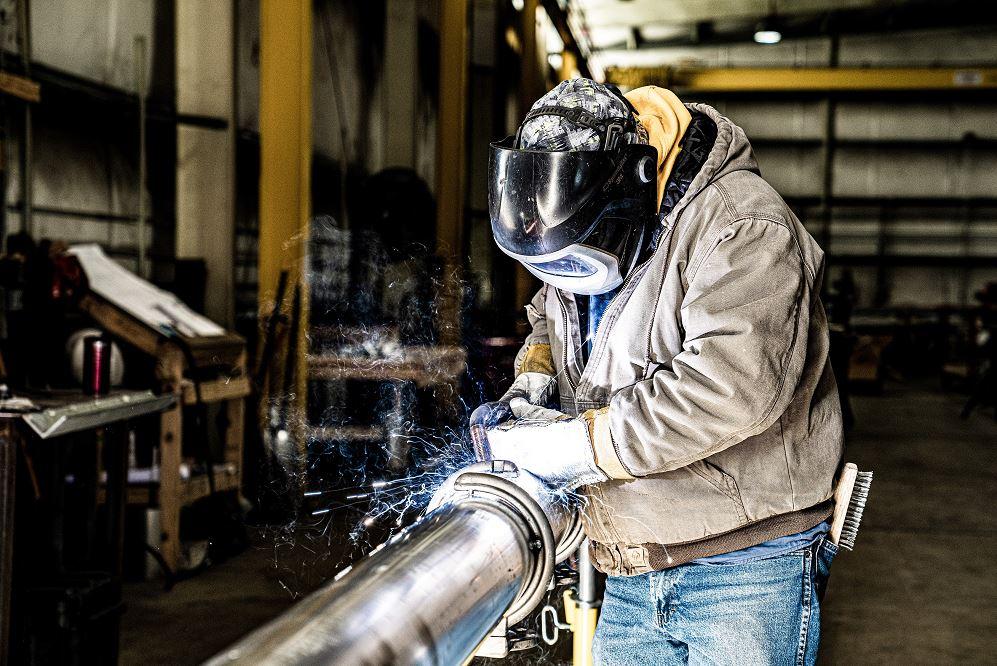What Does Aws Cwi Do?
What Does Aws Cwi Do?
Blog Article
About Aws Cwi
Table of ContentsSome Known Facts About Aws Cwi.Some Ideas on Aws Cwi You Need To KnowAws Cwi Can Be Fun For EveryoneThe Single Strategy To Use For Aws CwiHow Aws Cwi can Save You Time, Stress, and Money.Getting The Aws Cwi To WorkGetting My Aws Cwi To Work
Welding examination is an essential line of job. Any type of firm that does any sort of welding requires welding quality control inspectors to guarantee that the job is done right and that bonded structured are secure. Welding Inspection Agency. The task obligations of a welding inspector can offer great selection while the making possibility might raise substantially with experience.
If you have a metalwork company, understanding how welding functions and why welding assessments are crucial is important. Welding evaluations are needed to ensure criteria are fulfilled and risks recognized.
What are these approaches, and which welding examination techniques are the most commonly used and trustworthy? In the UK, there are 5 common NDT examination techniques for welding.

Top Guidelines Of Aws Cwi
This kind of welding inspectionexamination is affordable and can be carried out while service a structure or material is being completed. Welding inspection businesses will regularly begin with a visual assessment to validate there are no evident problems. Nevertheless, aesthetic welding checks, are restricted due to the fact that only surface mistakes may be determined.

Additionally, this kind of assessment will not service all surface areas, such as those with a thick layer of paint. Surface area cracks that can not be seen with the human eye are found through liquid penetrant assessment or PT. This strategy is regularly used to find leaks brought on by welding mistakes. PT can be utilized to assess magnetic and nonmagnetic materials, in comparison to Magnetic Bit Inspection.
Furthermore, proper pre and post-inspection cleansing is needed for this welding assessment (Certified Welding Inspector). Both internal and outside mistakes can be discovered with ultrasonic screening, commonly understood as UT bonded assessment.
See This Report about Aws Cwi
These rules aid assessors in making sure that tools and materials might be used successfully and safely. Examinations are performed by licensed welding assessors using a selection of instruments and methods. These evaluations give information regarding the dimension and quality of the weld. Most importantly, they punctuate any kind of imperfections or shortcomings.
These records include Welding Treatment Specifications (WPS), welder qualifications, examination documents, job specs, and appropriate welding codes (https://canvas.instructure.com/eportfolios/2922857/Home/Welding_Inspection_Service_Your_Guide_to_TopNotch_Quality_and_Compliance). Prior to welding, CWIs evaluate both base metals and filler steels, noting that they conform with the WPS and task specifications.
Throughout manufacture, CWIs inspect a selection of items to guarantee that the WPS and task specifications are being properly adhered to. These items consist of interpass temperature levels, sufficient combination, cleansing, traveling speed, and weld deposit dimension. Examination during welding is often forgotten, but it is a vital component of guaranteeing weld high quality.
The Main Principles Of Aws Cwi
After a weld is finished, a CWI will inspect it carefully, checking and measuring any type of suspensions such as porosity, undercut, cracks, incomplete fusion, or inadequate account. The size of the weld is likewise determined for uniformity to the job specs. If any one of the interruptions do not follow job demands, they are thought about problems and should be repaired.
AWS requires an eye test and a mix of education and job experience. According to PayScale, a typical welder can expect to gain $30,000 to $40,000 a year.

The Basic Principles Of Aws Cwi
CWIs have excellent work chances and high pay because they have to be educated regarding every part of the welding process in order to inspect weld top quality and take obligation for each task. Expertise alone is not enough. A reliable CWI is also an efficient communicator. He or she should be able to plainly understand everyone's duty in the job and accurately report the condition and top quality of the project to stakeholders.
CWIs need to have thick skin and the capacity to talk honestly with stakeholders, even when they have to interact something they do not wish to listen to. If a CWI lies about problems since she or he intends to please the company, the safety and security of the basic public is put at risk.
Welding inspectors offer quality control by monitoring the entire welding process. They use a variety of tools to examine welds. They are checked for qualification by AWS to ensure skill and understanding and they are awarded with greater wages for their work. If you want to learn more concerning welding evaluation, review our articles on essential topics concerning the industry including the CWI test and just how to end up being a CWI.
The smart Trick of Aws Cwi That Nobody is Talking About
The key goals of weld evaluation and quality control are preventing welding issues by taking restorative activities early in the production phase, and ensuring the top quality of the end item. For instance, a prompt evaluation can avoid an entire batch of negative welds resulting from inadequate joint cleanliness or fit-up.
Occasionally, it might be essential to evaluate the WPS certification by performing examinations on weld promo codes (test pieces). Confirming the base metal and welding consumables conformity with the relevant specifications. Inspecting for joint cleanliness and appropriate fit-up. Making sure that the joint layout and weld prep work is certified with the WPS and applicable welding standards (ASME, AWS, API).

Sometimes, pre-welding inspection might locate abnormalities that are within code constraints yet could pose a concern at a later phase in manufacturing. That's why it's crucial for the welding inspector to be accustomed to the whole manufacturing procedure and to be experienced with the bonded devices. Assessment throughout the welding process is vital for identifying the weld flaws and stopping an inaccurate welding approach from creating massive weld rejections across the entire task.
Aws Cwi Fundamentals Explained
An additional example would be not checking for excessive distortion, which would lead to weld denial and costly rework if done on expensive devices like warmth exchangers, purification columns, and boilers. A few of the typical quality assurance checks during welding are: Confirmation of pre-heat and interpass temperature levels and ensuring that they are within limits specified in the WPS.
Validate the securing gas and change are as instructed in the WPS. Evaluating sequencing procedures for distortion control. learn the facts here now Tack weld high quality assessment. Validating a correct fit-up before welding. Examining the origin pass and succeeding weld passes. Checking the origin problem prior to welding the opposite. Guaranteeing that slag, silica, and various other contaminants are gotten rid of in between passes.
Report this page